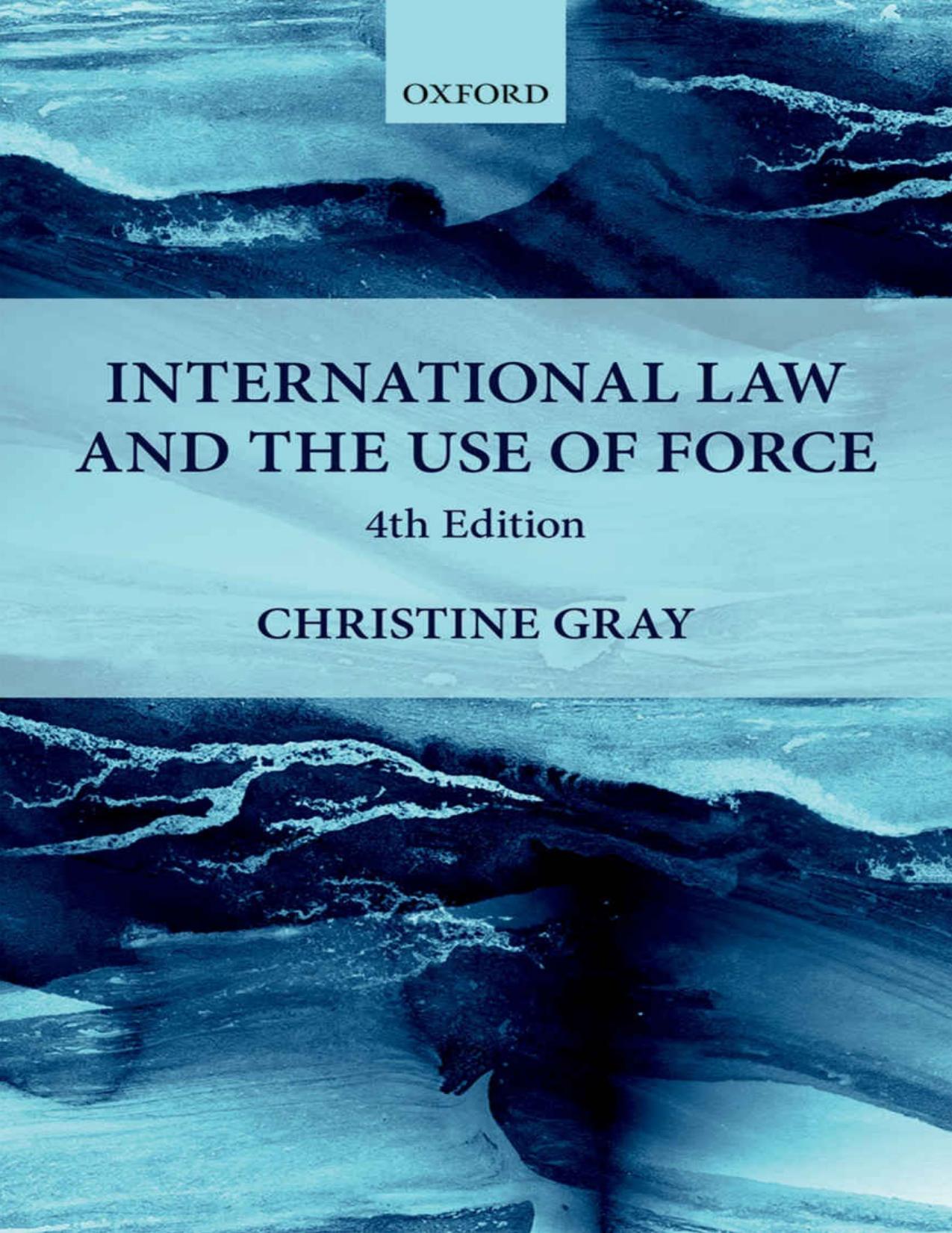International Law and the Use of Force 4th Edition by Christine Gray ISBN 0198808429 978-0198808428
$70.00 Original price was: $70.00.$35.00Current price is: $35.00.
Instant download International Law and the Use of Force 4th Edition by Christine Gray Christine Gray after payment
International Law and the Use of Force 4th Edition by Christine Gray – Ebook PDF Instant Download/Delivery: 0198808429 978-0198808428
Full download International Law and the Use of Force 4th Edition after payment

Product details:
ISBN 10: 0198808429
ISBN 13: 978-0198808428
Author: Christine Gray
This book explores the large and controversial subject of the use of force in international law. It examines not only the use of force by states but also the role of the UN in peacekeeping and enforcement action, and the increasing role of regional organizations in the maintenance of international peace and security.
The UN Charter framework is under challenge. Russia’s invasion of Georgia and intervention in Ukraine, the USA’s military operations in Syria, and Saudi Arabia’s campaign to restore the government of Yemen by force all raise questions about the law on intervention. The ‘war on terror’ that began after the 9/11 terrorist attacks on the USA has not been won. It has spread far beyond Afghanistan: it has led to targeted killings in Pakistan, Somalia, and Yemen, and to intervention against ISIS in Iraq and Syria. Is there an expanding right of self-defence against non-state actors? Is the use of force effective? The development of nuclear weapons by North Korea has reignited discussion about the legality of pre-emptive self-defence. The NATO-led operation in Libya increased hopes for the implementation of ‘responsibility to protect’, but it also provoked criticism for exceeding the Security Council’s authorization of force because its outcome was regime change. UN peacekeeping faces new challenges, especially with regard to the protection of civilians, and UN forces have been given revolutionary mandates in several African states. But the 2015 report Uniting Our Strengths reaffirmed that UN peacekeeping is not suited to counter-terrorism or enforcement operations; the UN should turn to regional organizations such as the African Union as first responders in situations of ongoing armed conflict.
International Law and the Use of Force 4th Table of contents:
1. Law and force
Identification of the Law
Effectiveness of the Prohibition of the Use of Force
2. The prohibition of the use of force
Humanitarian Intervention
Kosovo: A New Role for NATO
Legality of Use of Force: the case before the International Court of Justice
The subsequent debate
Responsibility to Protect?
Darfur
Libya
Côte d’Ivoire (2011)
Right of Pro-Democratic Intervention
Force and Self-Determination
Other Claims Under Article 2(4)
3. Invitation and intervention
The Nicaragua Case
Armed Activities on the Territory of the Congo (DRC v Uganda)
The Right of a Government to Invite Outside Intervention
Classification of conflicts
Invitation by governments in practice
Intervention in Response to Prior Foreign Intervention
The Identification of the Government Entitled to Invite Intervention
Forcible Intervention to Assist the Opposition
Syria
Conclusion
4. Self-defence: the framework
Introduction
The Academic Debate
The Role of the Security Council
The duty to report to the Security Council
Self-defence as a temporary right
Security Council measures and self-defence
The Scope of Self-Defence
Armed attack
Criticism of the distinction between armed attack and frontier incident
Arguments for the distinction between armed attack and frontier incident
Necessity and proportionality
Protection of nationals
Anticipatory self-defence before the ‘Bush doctrine’
Conclusion
Collective Self-Defence
The Nicaragua Case
State practice on collective self-defence
The requirement of a request
Third state interest?
The duty to report to the Security Council under Article 51
Iraq and the Complexities of Collective Self-Defence
Conclusion
5. The use of force against terrorism: a new war for a new century?
Pre-9/11 Practice
The Impact of 9/11
The concept of armed attack after 9/11
Subsequent Practice
Israel, Syria, and Lebanon 2001–6
Israel/Lebanon 2006
Gaza (2008–9, 2012, 2014)
Other conflicts
Necessity and Proportionality
Israel in Lebanon and Gaza
Operation Enduring Freedom
Targeted Killing
Syria
The Bush Doctrine of Pre-Emptive Self-Defence
Iraq and Pre-Emptive Self-Defence
The Next Steps: Iran and North Korea
North Korea
Iran
6. The UN and the use of force
The UN in the Cold War
Chapter VII action
The division of powers between the Security Council and the General Assembly
Peacekeeping during the Cold War
A New Legal Order? Chapter VII After the Cold War
Article 41: Transformation
Peacekeeping After the Cold War
The end of Cold War conflicts
The start of new conflicts
Peacekeeping in Africa
Peacekeeping and Enforcement Action
Yugoslavia
Somalia
Contemporaneous peacekeeping and enforcement operations
Rwanda
Reform of UN Peacekeeping
The Relation of UN Peacekeeping and Chapter VII
Consent to peacekeeping
The use of force by peacekeeping operations: self-defence
The use of force by peacekeeping operations: beyond self-defence
Protection of civilians
A Transformation in Peacekeeping?
DRC
Mali
Conclusion
7. Security Council authorization of member states to use force
Express Authorization
Haiti
Rwanda
Albania
The CAR and Chad
East Timor
The need for control of member state operations
Member state operations in Africa: Côte d’Ivoire, Liberia, and the DRC
Kosovo
Afghanistan
The multinational force in Iraq (2003)
Implied (or Revived) Authorization to Use Force
Iraq 1991–2002
The 1999 Kosovo operation
Operation Iraqi Freedom (2003)
Libya (2011)
Mali
Conclusion
8. Regional peacekeeping and enforcement action
Introduction
Cooperation Between the UN and Regional Organizations
Cooperation between the UN and the AU
AU Operations
The AU in Somalia: AMISOM
The AU in Darfur: AMIS and UNAMID
The AU in Mali: AFISMA
The AU in the CAR: MISCA
‘Regional Arrangements and Agencies’
The Constitutional Bases for Regional Peacekeeping
The Legality of Regional Action in Terms of the UN Charter and General International Law
ECOWAS action in Liberia (1990–7)
The former USSR
ECOWAS action in Sierra Leone
A Reinterpretation of Article 53 of the UN Charter?
A regional right to use force to restore democratic government?
People also search for International Law and the Use of Force 4th:
international law and the use of force
c. gray international law and the use of force
gray c 2018 international law and the use of force
international law and the use of force book
use of force in international law
Tags:
Christine Gray,International Law,the Use



